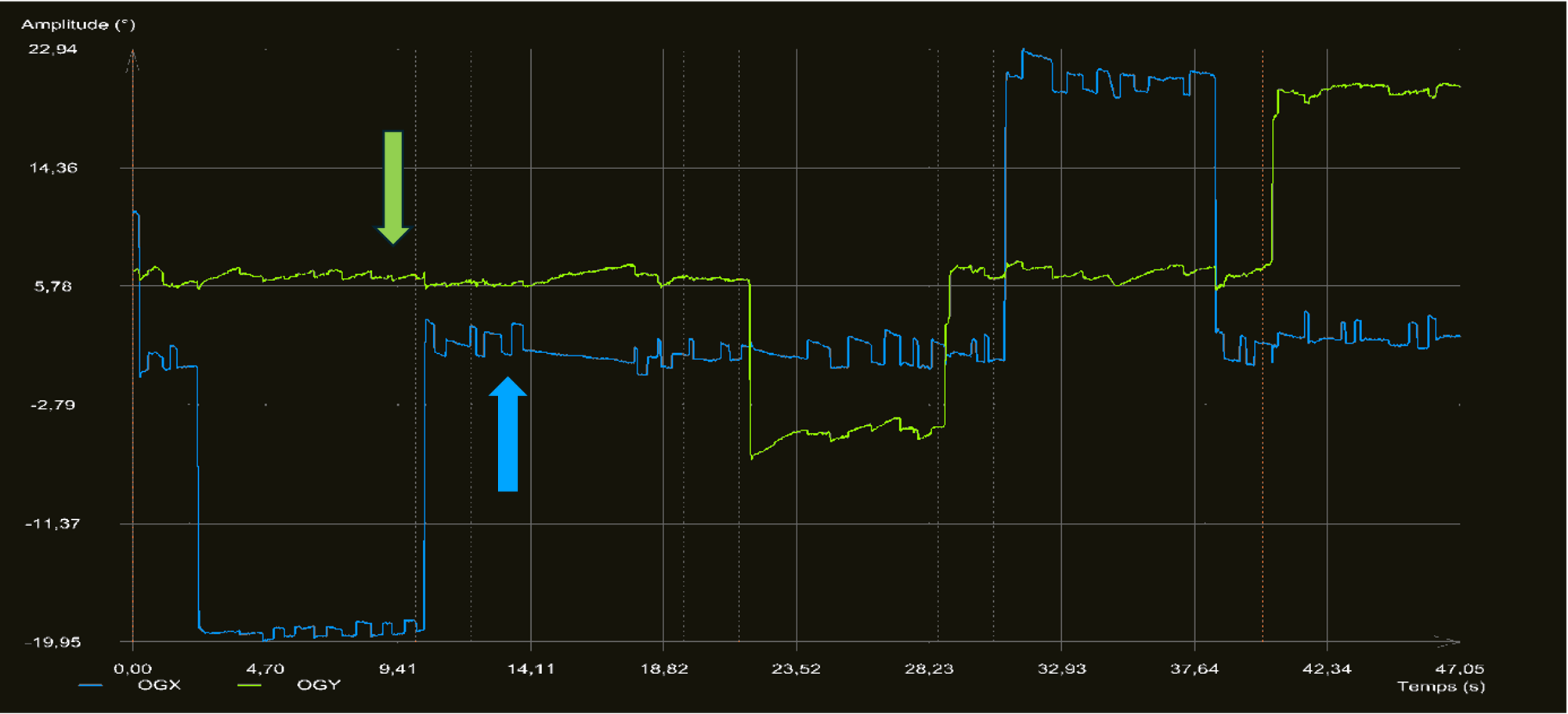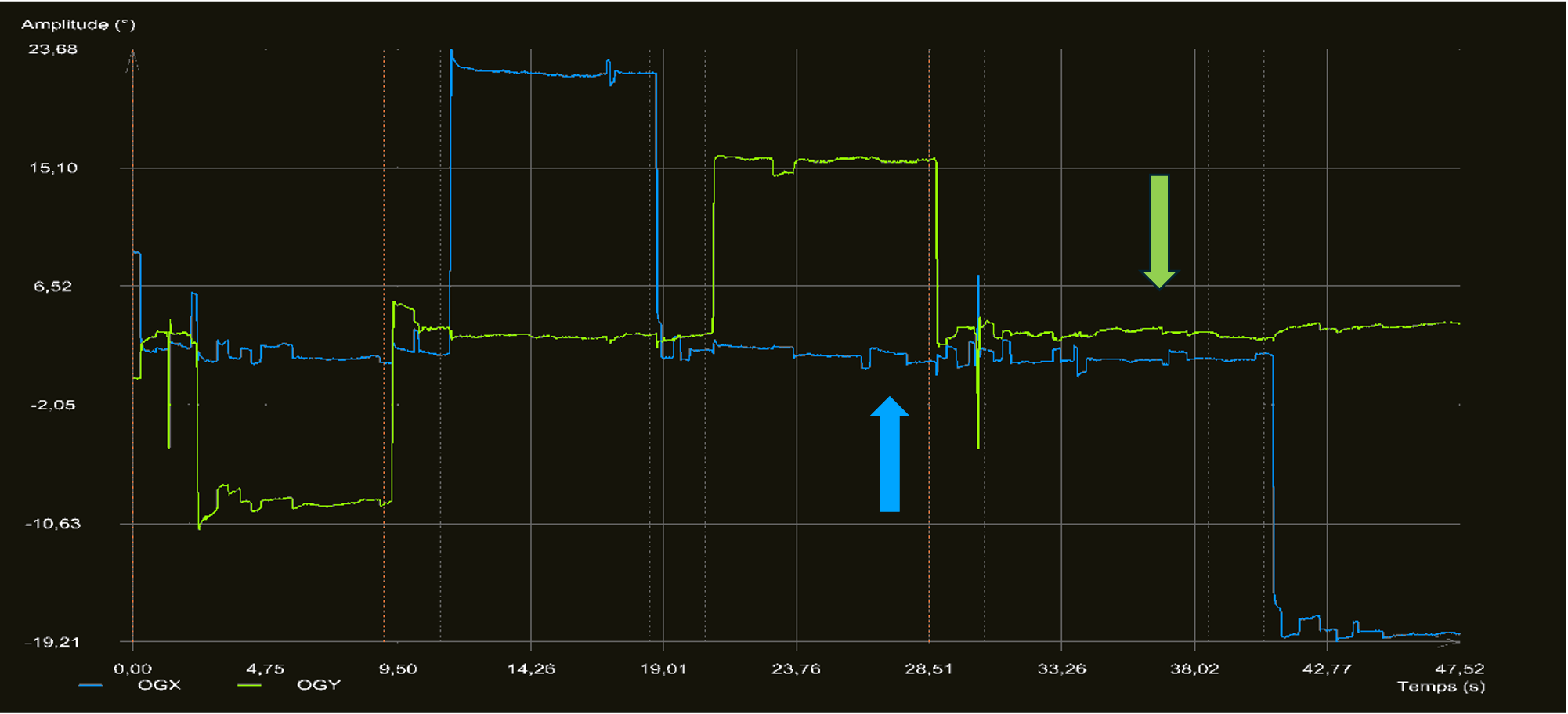Category: Ataxia
Objective: To assess objective clinical improvement in video-oculography in a patient with SCA27b on 4-aminopyridine (4-AP) treatment.
Background: Spinocerebellar ataxia 27b (SCA27b; MIM 620174) is caused by GAA repeat expansion in intron 1 of FGF14 [1] . It is a frequent cause of late-onset sporadic cerebellar syndrome [2] . The key phenotype triad is: onset over 45 years-old, episodic ataxic features, with downbeat nystagmus [3] . Retrospective and prospective n-of-1 trials showed efficacy of 4-AP in symptoms improvement, including reduced frequency and duration [4] .
Method: We describe a patient with paroxysmal ataxia and a downbeat nystagmus due to FGF14 repeat expansion treated with 4-aminopyridine (10mg per day during one week, then 10mg twice-a-day). We recorded via video-oculography before and one month after initiating the treatment.
Results: A 64-year-old male presented to our hospital with a history of four paroxysmal ataxia episodes since 2020. His episodes lasted several weeks characterized by gait ataxia with fatigue and falls, particularly during exertion. Clinical examination revealed dysmetria, unstable walking on a line, and unstable gait without dysarthria. The Scale for the Assessment and Rating of Ataxia (SARA) score was 8. Initial video-oculography demonstrated a downbeat nystagmus exacerbated by convergence, hyperventilation, and head positioning downward and numerous square-wave jerks (Figure 1). Molecular testing confirmed SCA27b with an expanded allele in FGF14 (GAA≥300). Treatment by 4-AP was initiated and patient reported dramatic subjective improvement at 1 month with delayed onset of gait disturbances. Clinical examination confirmed the subjective improvement with SARA of 1. Video-oculography demonstrated a significant decrease in the frequency and intensity of downbeat nystagmus and square waves. (Figure 2).
Conclusion: This is the first case report, to our knowledge, demonstrating significant objective clinical and video-oculographic improvement in SCA27b patient after 4-AP treatment. Randomized trials are needed to guide management of this underdiagnosed condition.
Downbeat nystagmus (green) square waves (blue)
Decreased nystagmus fast phases and square waves
References: 1. Pellerin D, Danzi MC, Wilke C, Renaud M, Fazal S, Dicaire MJ, et al. Deep Intronic FGF14 GAA Repeat Expansion in Late-Onset Cerebellar Ataxia. N Engl J Med. 2023 Jan 5;386(1):42-50.
2.Wirth T, Clément G, Delvallée C, Bonnet C, Bogdan T, Iosif A, et al. Natural History and Phenotypic Spectrum of GAA-FGF14 Sporadic Late-Onset Cerebellar Ataxia (SCA27B). Mov Disord Off J Mov Disord Soc. 2023 Oct;38(10):1950–6.
3. Méreaux JL, Davoine CS, Pellerin D, Coarelli G, Coutelier M, Ewenczyk C, et al. Clinical and genetic keys to cerebellar ataxia due to FGF14 GAA expansions. EBioMedicine. 2024 Jan;99:104931.
4. Wilke C, Pellerin D, Mengel D, Traschütz A, Danzi MC, Dicaire MJ, et al. GAA-FGF14 ataxia (SCA27B): phenotypic profile, natural history progression and 4-aminopyridine treatment response. Brain J Neurol. 2023 Oct 3;146(10):4144–57.
To cite this abstract in AMA style:
S. Coulette, M. Philibert, JM. Trocello, B. Gaymard, C. Desjardins. 4-Aminopyridine improves downbeat nystagmus in SCA27b: A case report [abstract]. Mov Disord. 2024; 39 (suppl 1). https://www.mdsabstracts.org/abstract/4-aminopyridine-improves-downbeat-nystagmus-in-sca27b-a-case-report/. Accessed December 12, 2025.« Back to 2024 International Congress
MDS Abstracts - https://www.mdsabstracts.org/abstract/4-aminopyridine-improves-downbeat-nystagmus-in-sca27b-a-case-report/


